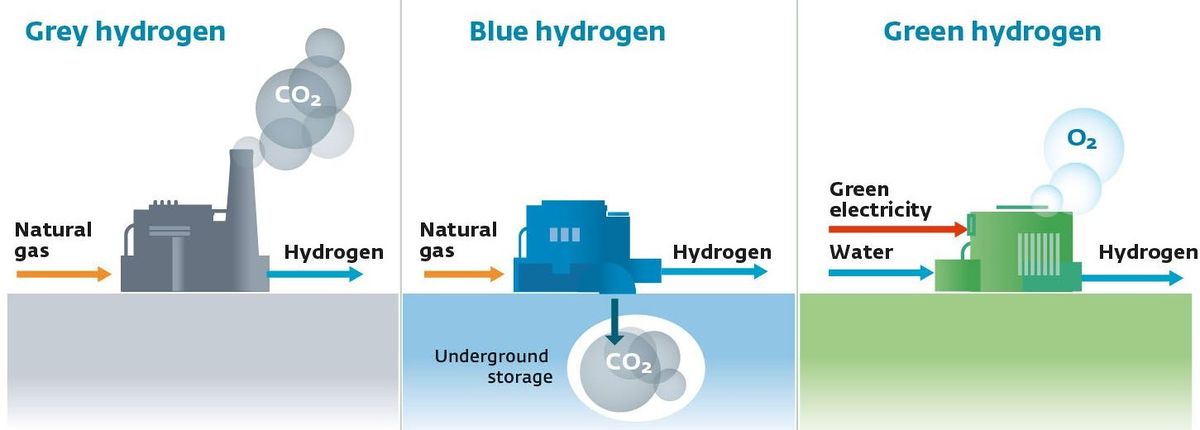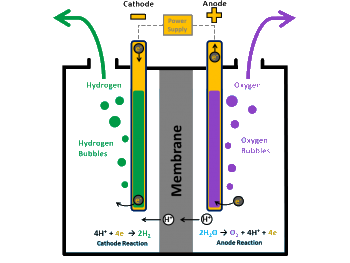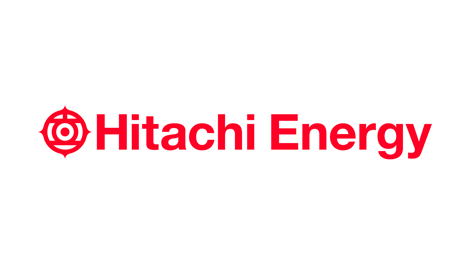Hitachi Energy – Andreas Schierenbeck to be appointed new CEO Claudio Facchin to step down on June 30, 2024
Hitachi Energy today announced that Andreas Schierenbeck will be appointed as the new Chief Executive Officer, effective July 1, 2024.
Claudio Facchin, Hitachi Energy CEO, will step down at the end of June 2024.
Andreas will engage with the Hitachi Energy Board, Executive Team and Claudio to ensure a smooth transition prior to the handover on July 1, 2024.
Andreas joins Hitachi Energy from HH2E, a new green-hydrogen production company, where he is currently co-founder and board member. He previously worked as CEO of Uniper from 2019 to 2021, where he launched the company’s decarbonization strategy. Prior to that he was the CEO of thyssenkrupp Elevator, where he led the transformation of the company into a global leader leveraging digital technology from 2013 to 2018. Between 1992 and 2012, Andreas held various management positions within Siemens, including President and CEO of Siemens Building Technologies in the US between 2010 and 2012 and Senior Vice President in the Siemens electric utility sector in Switzerland. He holds a Master of Science degree in Electrical Engineering from the TU Dresden and an Advanced Management Certificate from Harvard University in the US. Andreas is a German citizen.
“I would like to welcome Andreas to Hitachi Energy to lead the next phase of exciting growth for the business. I would also like to express my appreciation to Claudio for his great leadership transitioning and transforming the company over the last four years from the carve-out of ABB’s Power Grids business through the Hitachi ABB Power Grids Joint Venture (JV) into Hitachi Energy, a fully-owned subsidiary of Hitachi Group”, said Keiji Kojima, Representative Executive Officer, President & CEO of Hitachi, Ltd. “I look forward to continuing to support Hitachi Energy’s growth plan under the leadership of Andreas, and I wish Claudio all the best for the journey ahead.”
Following a planned transition and a thorough selection process, we have appointed Andreas Schierenbeck as the successor to Claudio Facchin”, said Alistair Dormer, Chair of Hitachi Energy and Executive Vice President, Executive Officer and General Manager of Green Energy & Mobility Strategy Planning Division, Hitachi, Ltd. “Claudio can be proud of his four years as CEO, and it has been a pleasure working with him during the past two years, supporting him and the Executive Team to deliver the transformation into Hitachi Energy, the leading power grids technology and solution provider. The Hitachi Energy 2030 growth plan centered around the commitment to continuously invest in innovation and partnerships to serve our customers is a solid foundation to build on, and I look forward to working with Andreas and the entire Hitachi Energy leadership team as we accelerate the delivery of the Hitachi Energy growth plan. Andreas’ experience of delivering transformational growth across sectors will help Hitachi Energy to scale growth and synergies with Hitachi.”
“It’s been an honor and a privilege to lead the transition to Hitachi Energy, working alongside the Executive Team and the entire Hitachi Energy organization across the globe”, said Claudio Facchin, CEO of Hitachi Energy. “The authentic passion and unwavering ownership of this team has been a limitless source of energy and motivation for me personally. Together with Hitachi teams, we have worked with customers and partners to advance the world’s energy system to be more sustainable, flexible and secure. The extraordinary achievements of Hitachi Energy would not have been possible without the continuous support from Hitachi Group. I look forward to onboarding Andreas, together with the Executive Team and the Board of Hitachi Energy, until the handover on July 1, 2024.”
“I am thrilled to embark on this journey as the new CEO of Hitachi Energy, steering the company towards new horizons in an era of transformation, where the demand for electricity is surging due to the rapid electrification of transport, buildings, and industries”, said Andreas Schierenbeck. “It is a profound honor to lead an experienced team so deeply committed to quality, innovation and sustainability as we help our customers and society accelerate towards a greener future. Together, we will continue to expand Hitachi Energy’s profitable business, ensuring that our collective efforts contribute significantly to a sustainable and electrified future.”
SourceHitachi Energy
EMR Analysis
More information on Hitachi Ltd.: https://www.hitachi.com + Hitachi drives Social Innovation Business, creating a sustainable society through the use of data and technology. We solve customers’ and society’s challenges with Lumada solutions leveraging IT, OT (Operational Technology) and products. Hitachi operates under the business structure of “Digital Systems & Services” – supporting our customers’ digital transformation; “Green Energy & Mobility” – contributing to a decarbonized society through energy and railway systems, and “Connective Industries” – connecting products through digital technology to provide solutions in various industries. Driven by Digital, Green, and Innovation, we aim for growth through co-creation with our customers. The company’s consolidated revenues for fiscal year 2022 (ended March 31, 2023) totaled 10,881.1 billion yen, with 696 consolidated subsidiaries and approximately 320,000 employees worldwide.
More information on Toshiaki Higashihara (Executive Chairman, Hitachi Ltd.): https://www.hitachi.com/corporate/about/officers/index.html#toshiaki-higashihara
More information on Keiji Kojima (President & Chief Executive Officer, Hitachi Ltd.): See the full profile on EMR Executive Services
More information on Alistair Dormer (Chairman of the Board, Hitachi Energy + Executive Vice President, Chief Environmental Officer of Hitachi, Ltd. + Chair of Hitachi Europe Ltd. + Executive Advisor for the Green, Energy and Mobility Sector, Hitachi, Ltd.): See the full profile on EMR Executive Services
More information on Hitachi Energy: See the full profile on EMR Executive Services
More information on Claudio Facchin (Senior Vice President and Executive Officer, Hitachi, Ltd. + Chief Executive Officer, Hitachi Energy Ltd till June 30, 2024): See the full profile on EMR Executive Services
More information on Andreas Schierenbeck (Co-founder and Board Member, HH2E till June 30, 2024 + Senior Vice President and Executive Officer, Hitachi, Ltd as from July 1, 2024 + Chief Executive Officer, Hitachi Energy Ltd as from July 1, 2024): See the full profile on EMR Executive Services
More information on HH2E: https://www.hh2e.de/ + We are a fast-growing German company in the field of green energy. Together, we have developed a radically new next-generation power station. We are growing every day and are looking for people who can help us grow with their enthusiasm and skills. We firmly believe that the energy market must change fundamentally if life on our planet is to remain worth living. This is only possible through collaboration and the diversity of ideas, skills and people.
The HH2E power station transforms the fluctuating feed-in of solar and wind energy into stable power supply.
We do so by making targeted use of solar and wind energy generated during production peaks. HH2E technology makes carbon-free heat, green hydrogen and green electricity affordable and competitive for local industries and communities.
More information on Alex Voigt (Co-founder and Board Member, HH2E): https://www.hh2e.de/en/ + https://www.linkedin.com/in/alexander-voigt-65392045/
More information on Andreas Schierenbeck (Co-founder and Board Member, HH2E till June 30, 2024 + Senior Vice President and Executive Officer, Hitachi, Ltd as from July 1, 2024 + Chief Executive Officer, Hitachi Energy Ltd as from July 1, 2024): See the full profile on EMR Executive Services
More information on Uniper: https://www.uniper.energy/ + Uniper is an international energy company that operates roughly 22.5 GW of generation capacity in Europe, which ranks us among the world’s largest power producers. Our speciality is flexible low-carbon power that’s available when needed.
Uniper is also a global energy merchant and a leading European gas company with a diversified portfolio of long-term contracts, LNG, and market transactions amounting to roughly 200 TWh annually.
We intend for our entire business to be carbon-neutral by 2040. We’ll achieve this by exiting coal, expanding our portfolio of green and flexible power, and converting to greener gases. Part of the latter involves conducting projects that will help make zero- and low-carbon hydrogen a mainstay of tomorrow’s energy supply.
The progressive decarbonization of our power and gas portfolio will, indirectly, support our customers’ climate ambitions. But we also offer direct assistance. We work closely with cities, utilities, and industrial enterprises to design and implement bespoke solutions that enhance their energy efficiency and reduce their carbon emissions.
In sum, our heritage, assets, and skills enable us to play a unique and vital role in further accelerating Europe’s decarbonization journey, while ensuring a reliable energy supply along the way.
- Active in more than 40 countries, with core markets in Germany, the Netherlands, Sweden and the UK
- Roughly 22.5 GW of power generation capacity (roughly equal to the total capacity of the Netherlands)
- Entire business to be carbon-neutral by 2040
- Gas portfolio consisting of roughly 200 TWh of long-term contracts, LNG, and short-term market transactions.
- 7.4 billion cubic meters (bcm) of underground gas storage capacity (Germany, Britain, Austria)
- Roughly 7,000 employees
- Solid sustainability ratings: MCSI ESG rating: BB; CDP: B; EcoVadis: Silver
- €1.8 billion in EBITDA
More information on Michael D. Lewis (Chief Executive Officer, Uniper): https://www.uniper.energy/investors/corporate-governance/management-board + https://www.linkedin.com/in/michael-lewis-uniper/
More information on thyssenkrupp: https://www.thyssenkrupp.com/en/home + thyssenkrupp is an international industrial and technology company employing around 100,000 people. Across 48 countries it generated sales of €38 billion in fiscal 2022/2023. Since October 1, 2023, the business activities have been bundled into five segments: Automotive Technology, Decarbon Technologies, Materials Services, Steel Europe and Marine Systems. Backed by extensive technological know-how, the businesses develop cost-effective and resource-friendly solutions to the challenges of the future. Around 4,000 employees work in research and development at 75 locations all over the world, mainly in the fields of climate protection, the energy transition, digital transformation in the industry and mobility of the future. thyssenkrupp currently has a portfolio of approximately 14,630 patents and utility models. Under the thyssenkrupp umbrella brand the company creates long-term value with innovative products, technologies and services and contributes to a better life for future generations. To this end, the company pursues ambitious climate protection targets and optimizes its own energy and climate efficiency. At the same time, it uses its diverse abilities along the relevant value chains to play a significant role in driving forward its customers’ green transformation. thyssenkrupp is listed in the MDAX index. thyssenkrupp shares are traded on Frankfurt Stock Exchange (symbol: TKA) and as American depositary receipts (symbol: TKAMY) in the USA.
More information on Miguel Ángel López Borrego (Chief Executive Officer, thyssenkrupp): https://www.thyssenkrupp.com/en/company/management/executive-board + https://www.linkedin.com/in/miguel-angel-lopez-borrego/
More information on thyssenkrupp Elevator: https://www.tkelevator.com/global-en/ + We are moved by what moves people. By what moves the world. In ever-growing cities. We provide better access. And new ways to travel longer distances. With clear solutions for increasingly complex infrastructures. We define service by always putting our knowledge to our customers’ advantage. We are always dedicated to doing better. Day by day. This is who we are. This is TK Elevator.
Engineering that keeps the world moving.
- Customers in >100 countries
- >50,000 Employees
- -1,000 Sales and services locations
- Sales of € 8.5bn
More information on Siemens: See full profile on EMR Executive Services
More information on Dr. Roland Busch (President and Chief Executive Officer, Siemens AG): See full profile on EMR Executive Services
More information on TU Dresden: https://tu-dresden.de/# + Technische Universität Dresden (TUD) is one of the largest technical universities in Germany and is among the leading and most dynamic universities in Germany. As a university with 17 faculties in five Schools, TUD offers a broad variety of 119 degree courses and covers a wide research spectrum in the Research Priority Areas (RPAs) Health Sciences, Biomedicine & Bioengineering, Information Technology & Microelectronics, Smart Materials & Structures, Energy, Mobility & Environment as well as Culture & Societal Change.
- Established in 1828
- 17 Faculties in 5 Schools
- Since 2012, TUD has been one of Germany’s 11 Universities of Excellence
More information on Prof. Dr. Ursula M. Staudinger (Rector, TU Dresden): https://tu-dresden.de/tu-dresden/organisation/rektorat
More information on the Harvard University: https://www.harvard.edu/ + Those who venture here—to learn, research, teach, work, and grow—join nearly four centuries of students and scholars in the pursuit of truth, knowledge, and a better world.
Harvard University is devoted to excellence in teaching, learning, and research, and to developing leaders in many disciplines who make a difference globally. Founded in 1636, Harvard is the oldest institution of higher learning in the United States.
More information on Alan Garber (Interim President, Harvard University): https://www.harvard.edu/president/
EMR Additional Notes:
- Hydrogen:
- The atom of hydrogen is the first element in the periodic table, with chemical symbol H and the first element created after the Big Bang. It is the most common substance in the universe and the richest energy source for stars like the sun. It consists of one proton (a core unit of positive charge) and one electron (negative charge).
- Hydrogen doesn’t exist naturally on Earth. Since it forms covalent compounds with most non-metallic elements, most of the hydrogen on Earth exists in molecular forms such as water or organic compounds. Combined with oxygen, it is water (H2O). Combined with carbon, it forms methane (CH4), coal, and petroleum. It is found in all growing things (biomass).
- Hydrogen (H2) is the most abundant element on earth but it rarely exists alone, therefore it is produced by extracting it from its compound.
- Hydrogen can be produced in numerous ways. Some methods produce CO2 while others are carbon free.
- H2 can be renewable or decarbonized if produced using renewable or carbon free electricity.
- Hydrogen has the highest energy content of any common fuel by weight.
- Hydrogen is a high efficiency, low polluting fuel that can be used for transportation, heating, and power generation in places where it is difficult to use electricity or as a CO2 neutral feedstock for chemical processes (ammonia-fertilizers).
- Grey, Blue or Green Hydrogen:
- There is a growing international consensus that clean hydrogen will play a key role in the world’s transition to a sustainable energy future. It is crucial to help reduce carbon emissions from industry and heavy transport, and also to provide long-term energy storage at scale.
- Researchers have found that clean hydrogen still costs too much to enable it to be widely deployed. Prices may not come down sufficiently until the 2030s, according to some estimates. But despite the uncertainty surrounding the future of clean hydrogen, there are promising signs that it could become more affordable sooner than expected.
- Where the hydrogen comes from is important. At the moment, it’s mainly produced industrially from natural gas, which generates significant carbon emissions. That type is known as “grey” hydrogen.
- A cleaner version is “blue” hydrogen, for which the carbon emissions are captured and stored, or reused.
- The cleanest one of all is “green” hydrogen, which is generated by renewable energy sources without producing carbon emissions in the first place.

- Hydrogen Electrolyzer:
- An electrolyzer is a system that uses electricity to break water into hydrogen and oxygen in a process called electrolysis. Through electrolysis, the electrolyzer system creates hydrogen gas.
- Steam at the cathode combines with electrons from the external circuit to form hydrogen gas and negatively charged oxygen ions. The oxygen ions pass through the solid ceramic membrane and react at the anode to form oxygen gas and generate electrons for the external circuit.

- Carbon Dioxide (CO2):
- Primary greenhouse gas emitted through human activities. Carbon dioxide enters the atmosphere through burning fossil fuels (coal, natural gas, and oil), solid waste, trees and other biological materials, and also as a result of certain chemical reactions (e.g., manufacture of cement). Carbon dioxide is removed from the atmosphere (or “sequestered”) when it is absorbed by plants as part of the biological carbon cycle.
- Biogenic Carbon Dioxide (CO2):
- Carbon Dioxide released as a result of the combustion or decomposition of organic material, that is biomass and its derivatives. Examples include carbon dioxide released during the combustion of wood and biogas generated by decomposition.
- Biogenic Carbon Dioxide (CO2) and Carbon Dioxide (CO2) are the same. Scientists differentiate between biogenic carbon (that which is absorbed, stored and emitted by organic matter like soil, trees, plants and grasses) and non-biogenic carbon (that found in all other sources, most notably in fossil fuels like oil, coal and gas).
- Carbon Capture and Storage (CCS):
- CCS involves the capture of carbon dioxide (CO2) emissions from industrial processes, such as steel and cement production, or from the burning of fossil fuels in power generation. This carbon is then transported from where it was produced, via ship or in a pipeline, and stored deep underground in geological formations.
- CCS projects typically target 90 percent efficiency, meaning that 90 percent of the carbon dioxide from the power plant will be captured and stored.
- Decarbonization:
- Reduction of carbon dioxide emissions through the use of low carbon power sources, achieving a lower output of greenhouse gasses into the atmosphere.
- Carbon Footprint:
- There is no universally agreed definition of what a carbon footprint is. A carbon footprint is generally understood to be the total amount of greenhouse gas (GHG) emissions that are directly or indirectly caused by an individual, organization, product, or service. These emissions are typically measured in tonnes of carbon dioxide equivalent (CO2e).
- In 2009, the Greenhouse Gas Protocol (GHG Protocol) published a standard for calculating and reporting corporate carbon footprints. This standard is widely accepted by businesses and other organizations around the world. The GHG Protocol defines a carbon footprint as “the total set of greenhouse gas emissions caused by an organization, directly and indirectly, through its own operations and the value chain.”


